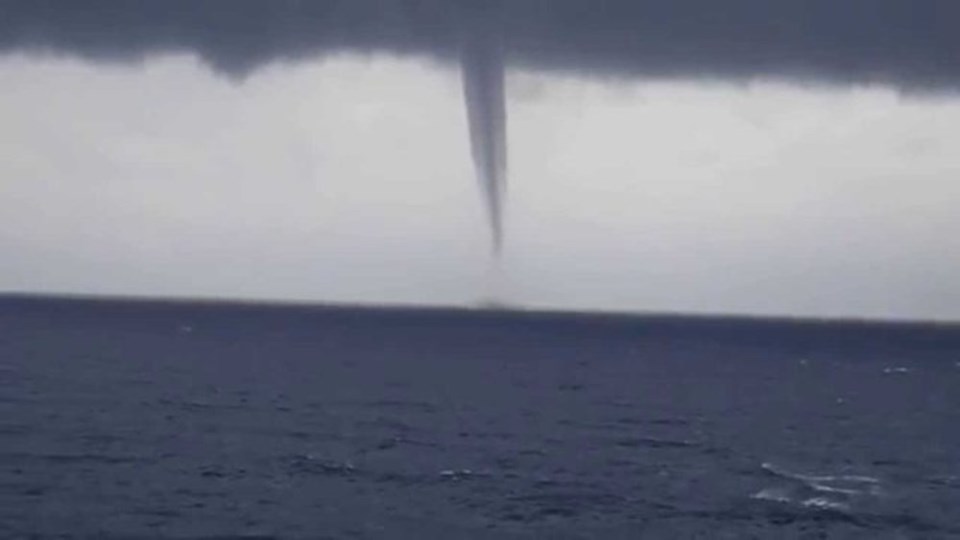If you've ever seen one of them moving across a B.C. lake, you may have been somewhat alarmed.
But as much as they look like their decidedly destructive relatives, some waterspouts are a far cry from tornadoes. However, they still carry the potential to wreak havoc--especially for seafaring folk.
In fact, Environment Canada meteorologist Armel Castellan tells Â鶹´«Ã½Ó³» that supercellular waterspouts have actually been responsible for sinking ships. That said, the ones we typically see in B.C. don't usually pack that kind of power.
The Szilagyi Waterspout Index (SWI), developed by Canadian meteorologist Wade Szilagyi, is used to predict conditions favourable for waterspout development. He distinguishes between “tornadic” versus “non-tornadic” waterspouts.
"The general point is that [waterspouts] are in the family of tornadoes. And that sometimes we differentiate between a non-supercellular tornado on the water and a tornado on the water, meaning one that is super-cellular that can perhaps migrate to land and cause a tornado," he explains, adding that these types of events are more likely to happen back east, such as on the Great Lakes.
In B.C.'s case, Castellan notes that the first and last tornadoes happen in B.C. in the spring and fall, when conditions are favourable. However, they typically don't make it to land and are not "catastrophic."
Waterspouts in B.C.
Castellan adds that waterspouts and land tornadoes are similar in that they have a rotating column of air and a condensation tunnel, but they are "quite different in that they don't come from the same mechanism in the sky."
And here in B.C. we are less likely to see supercellular land tornadoes form. "There's too much variety of terrain; it's too mountainous," he explains. "And we might have moisture but we won't have the heat."
A B.C. man shared an image of a water spout he spotted in the Johnstone Strait, which is along the north east coast of Â鶹´«Ã½Ó³»Island in British Columbia.
T’is the season!! BabyTwisters
— Armel Castellan (@armelcastellan)
Typically, Castellan says waterspouts form in tropical areas, such as in the Caribbean or in the southern United States. That said, it isn't rare to spot waterspouts during the stormy spring season in B.C.
In the United States, the National Weather Service issues a tornado warning if a waterspout moves onshore; some of them have caused significant damage and injuries to people.



